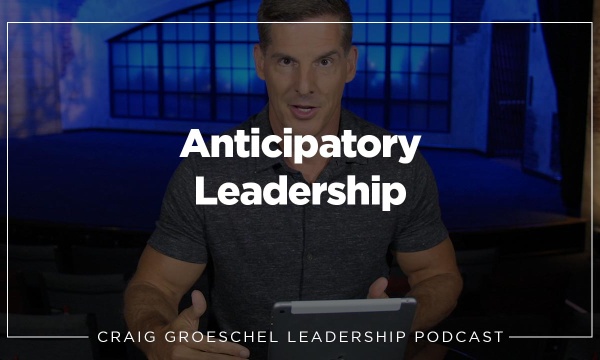Thank you for joining the Craig Groeschel Leadership Podcast! As a leader, your most valuable resource is always the people in your organization. We don’t bet on strategies. We don’t bet on products. We don’t bet on ideas. We bet on people. After all, they are the ones who create the strategies, products, and ideas.
People often think of developing when something goes wrong or there's a mistake made. The best time to develop, though, is on the front side of problems, not the back side. Today, let's look at four dark sides of developers.
#1: The Controlling Leader. Controlling leaders are often immature, insecure, or inexperienced. They don't understand leadership is about influence, not control. That's not to say a controlling leader doesn't have good intentions—they are often highly engaged and care deeply, but without trust they can create a dysfunctional culture.
- The Problem: Controlling leaders create compliant followers. They develop their team into a crew of yes-people who can't think for themselves. Ron Edmondson says when you have a controlling leader, leaders leave, followers stay, and the organization stalls.
- The Application: You can have control or you can have growth, but you can't have both.
#2: The Critical Leader. A critical leader often points out what's wrong, and rarely what's right. Again, this leader almost always has good intentions behind their actions. They believe to help someone improve, you have to show them what they did wrong.
- The Problem: Critical leaders produce insecure followers. Critical leadership creates a climate of fear. People start second-guessing themselves and they become afraid to take risks.
- The Application: The insecure leader gives blame, but the strong leader takes responsibility. Show people what they did right, then show them what they can do better.
#3: The Avoiding Leader. An avoiding leader tries not to get involved. That's not always a problem--busy seasons and distractions will pop up, but when a leader is generally afraid of confrontation, it becomes a major issue for the whole team.
- The Problem: The avoiding leader creates disengaged followers. They don't coach, mentor, or help. A team member might be doing well, but they won't know because their leader refuses to communicate. And if a team member feels like their leader doesn't care, it's difficult for them to care, too. Over time, the problem isn't the problem anymore. The problem is the leader.
- The Application: You can’t correct what you are unwilling to confront. Confront problems early and solve them quickly. Small problems you ignore generally grow to big problems.
#4: The Rescuing Leader. This is the opposite of the avoiding or disengaged leader. A rescuing leader dives in and is always ready to help, but sometimes they help too much. They care so much about the people they lead, they start doing all the work for them.
- The Problem: You might have seen this in some family dynamics—like bailing out a family member who's bad at managing their finances, for instance. To the rescuer, this feels good, loving, and helpful, but everyone else knows it has the opposite effect. The person who needs help isn't really getting it since the leader is providing a short-term solution to a larger problem.
- The Application: Once the rescuing stops, the growth begins. Leaders who truly care about the people they lead will let them fail from time to time, so they can learn from their mistakes and improve. That's when team members can really develop.
Identify the dark side you see most in yourself. If you don't know which one it is, ask around! You'll find out pretty quickly. Next month, we'll continue this discussion with more about how a fifth type of leader—a Developing Leader—produces leaders, not followers.
Remember, you don’t have to know it all to be a great leader! Be yourself. People would rather follow a leader who is always real than one who is always right.
DISCUSSION QUESTIONS
Here's an exercise you can do to grow as a leader—ask yourself and your team these questions:
- Which of the four dark sides of leadership do you battle with the most: Controlling, Criticizing, Avoiding, or Rescuing?
- Looking at the application of that potential dark side, what do you need to change in your leadership to better develop the people around you?
EPISODE RESOURCES
Leave a review: www.go2.lc/leadershippodcastitunes
Catalyst One Day: www.catalystconference.com/oneday
Watch Life.Church messages: www.life.church/watch
More from Craig: www.craiggroeschelbooks.com
Ron Edmondson, Thoughts on Leadership, Church, and Culture
Craig Groeschel, Divine Direction: 7 Decisions That Will Change Your Life
Free church resources & tools: www.life.church/churches
CONNECT WITH CRAIG
Ask questions: leadership@life.church
Facebook: www.facebook.com/craiggroeschel
Twitter: @craiggroeschel
Instagram: @craiggroeschel
Snapchat: @craiggroeschel
Periscope: @craiggroeschel



